********** ****-********** (ACM)
advertisement
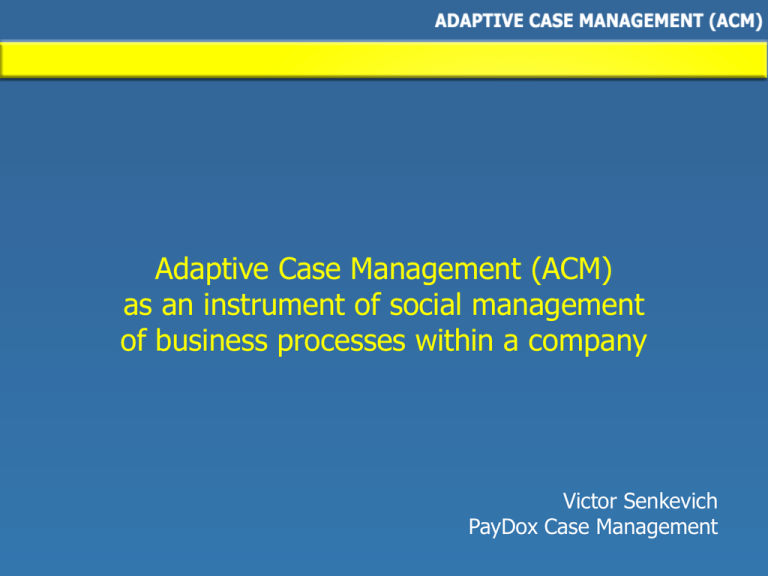
Adaptive Case Management (ACM) as an instrument of social management of business processes within a company Victor Senkevich PayDox Case Management What is a company? What is a modern company ? Define it in one word The correct answer is on the next slide What is a company? A company – is people To be more precise, it is people working together towards a common goal These people cooperate to support the functioning of multiple business processes within a company In cooperating, employees of a company utilize elements of its infrastructure (or technosphere) – machinery, computers, telephones, desks, etc. Business Processes (social aspect) Strongly structured, formalized, less social Business Processes (social aspect) Up to anti-social Business Processes (social aspect) Unstructured, informal, more social Business Processes (social aspect) Up to chaotic and completely unpredictable Corporate business processes Strictly defined business processes are easily automated by traditional information systems Social business processes, prevailing in a modern office, are often «automated» through any means at hand – e-mail, forums and blogs Plugged in office workers, equipped with iPhones and iPads, are waiting for business-applications that provide familiar ease of use Corporate business processes Traditional systems for controlling business processes (Business Process Management, BPMS) support strictly defined sequences of actions BPMS allows for automation of structured and formalized lists of tasks completed within an organization: processing of similar orders, standard formalizing of business trips, repeated purchasing of equipment and materials, etc. Corporate business processes Descriptions of business processes in traditional BPMS are compiled by a business analyst. To this end, studies of business processes within a company are conducted. Configuration of the BPM-system for controlling real business processes are made by qualified programmers. Corporate business processes In other words, descriptions of business processes and configuration of a traditional BPM-system require more time investment from qualified labour Unfortunate shortcomings of traditional BPMS After launching a traditional BPMS, it becomes apparent after a short time that change is constant within an organization. But who would have thought otherwise? And so descriptions of business processes and configurations of the BPMS already don’t reflect the real processes used. Thus we are forced to start over. The BPMS does not have any adaptability to real life situations. Additionally, the BPMS does not reflect any of the social management aspects within an organization. Unfortunate shortcomings of traditional BPMS A significantly large portion of work performed by teams of employees, in collaboration, is unstructured, requires discussion, assignment of tasks based on analysis of the current situation, and control of time lines in completion of tasks and assignments Traditional BPMS are poorly, or not at all, suited to react to problems, which arise in the performance of a business process from changing circumstances or opinions of the participants within the business process. In BPMS, there is no support for social functions Unfortunate shortcomings of traditional BPMS A business process management system without social functions «constitutes one of the main traits of the bourgeois world view – its inhumanity, endeavor to turn workers into a cogs, to replace a living, thinking, fighting for his own interest man with a machine» (1954, USSR’s Short Philosophical Dictionary of Cybernetics) Unfortunate shortcomings of traditional BPMS What must be done? To enhance the BPMS with social functions: discussions, tasks, assignments, groups of users To create a new class of applications – Adaptive Case Management systems (ACM), realizing principles of social management and oriented not on the process, but on results To integrate BPMS and ACM Adaptive Case Management (ACM) ACM systems are intended for organization of teamwork, tasks and assignments, control over time frames and execution Adaptive Case Management (ACM) Cases – sequences of tasks and messages, containing: Description of tasks, assignments, events, control points Discussions Lists of implementers, recipients, participants, controllers, authors, managers Documents and other files Tags and other forms of data Business rules Case Management Organization Chart A request is received from a client An incomplete case can be cancelled A completed case is closed Manager formulates a task or assignment There is a demand for goods or services in another business unit of the company Author creates a task or case in the ACM system Implementers complete tasks and assignments, create subtasks and discussions The case is The case is created created manually from a library of templates Manager / Controller manages the performance of tasks and assignments Reports What must an ACM system be like? To manage not separate tasks and assignments, but cases – collections of tasks and assignments, connected with the execution of an entire business process Tasks, assignments, discussions may be presented as a case – a sequence of messages, that may be entered in the correct order and containing descriptions of tasks, recipients, completion time frames, files What must an ACM system be like? Store all information on a business process in a virtual folder – all documents, photographs, videos, drawings and other files The multimedia catalogue allows for loading into the case any number of documents and files, opening and viewing documents in various formats, playing video and sound files, viewing photographs in a slide show, creating subfolders for distribution of files to groups, creating descriptions of the file catalogue What must an ACM system be like? Manage users within the case project team, give or revoke access to case tasks, files and messages, inform users of the need to begin work on a new task within the project It is possible to allow access to all tasks and discussions of a particular theme to only one specific group of users, participating in the realization of the project or case. It is possible to define users, roles, as well as whole subdivisions, or access groups (groups of users, which are formed for the realization of the project or case) What must an ACM system be like? Maintain control over rules, allowing for automatic activation of the case’s next task once a task has been completed, send users reminders, etc. Assignments and tasks can be given rules for automatic status updates. This way, varying levels of priority can be given to tasks and assignments, basically creating maps for completing cases What must an ACM system be like? Have a developed subsystem of filters, obtaining information on various segments in one click – «open assignments», «overdue», «assignments for current user», «assignments for subordinate employees», «outstanding department assignments», etc. One click of the mouse on a point or icon in the left menu allows you to obtain various lists of tasks and assignments, meant for the current user, as well as subordinate users or a whole department What must an ACM system be like? Keep a log of all user actions Task authors and administrator can see a short history of the work completed on a task by users (who created the task, when it was created, any edits to discussions and changes to status) What must an ACM system be like? Support discussions for any task in the case What must an ACM system be like? Support a library of templates, where you can successfully drop completed cases in one click, so that later you can create a whole case on any topic based on the template, already containing all tasks, all implementers, and all samples of documents and other files What must an ACM system be like? Easy to understand and attractive – present lists of tasks in cases as «checklists» – lists of tasks, in which checkmarks indicate completion and icons show all current statuses of tasks and assignments What must an ACM system be like? Full functionality on desktop computers, laptops, and tablets (iPad and others) What must an ACM system be like? And the main requirement for ACM – adaptability. The system must not require detailed inspection of business processes and programming with configurations for new business processes. New cases are formed by users as lists of tasks, which require completion, and are corrected and added to in the course of performance of the process Important advantages of ACM The ACM system – a tool for creation of corporate knowledge base. All knowledge, which is created in «office» business processes, may and must be separated from its bearers and saved for enterprise wide use to avoid creation of narrow or «unique», «irreplaceable» employees Adaptive Case Management (ACM) is a tool for this separation which provides for timely and stable performance of work by employees Important advantages of ACM Equally important is Adaptive Case Management’s ability to accumulate corporate knowledge for future use. Successfully completed cases, containing valuable information on collaborative work performed by employees, are stored in a library of templates, slightly adjusted and cleaned up for universal application (all non-essential discussions and comments are deleted, only important tasks, assignments and milestones are kept). After this is done, a new case on the similar business process can be created with a single click. The process is then repeated. As a result, for each subsequent project there is a convenient template with a list of tasks, assignments, a collection of forms, lists of implementers and document templates. The ever increasing library of case templates composes corporate knowledge, separated from concrete employees and stored in a digital format for corporate use. Important advantages of ACM Use of an Adaptive Case Management system helps avoid the creation of bottlenecks, unique or irreplaceable employees, whose vacations in the Caribbean, prior to the implementation of the system, would result in significant strain and work stoppages for remaining colleagues, but can now relax in peace during their vacations – current results of their corporate activities (assignments, activities, tasks, contacts, documents, discussions) are stored in ACM. Important advantages of ACM «It’s impossible to automate chaos!» «Automated chaos does not stop being chaotic!» Common misconceptions The adaptability and flexibility of ACM allows a company to automate its business processes «as is», in a fashion that is familiar to employees, without engaging in a risky implementation process, without stressing staff, or breaking existing business processes to achieve a theoretically correct condition «to be». Possible «chaos», which in this case is automated, becomes qualitatively different – measurable and controlled. After implementation of ACM, business processes become transparent, it becomes possible to perfect them in practice, and not on paper – easily adjusting and improving case templates. Advantages of ACM for business ACM – is it Versace jeans or jeans from a flea-market? What percentage of large companies use BPM systems? 5%? 15%? This means there is room to grow. Additionally, this means that not everything is well with the use of these systems even in places where there are sufficient resources. And what percentage of small companies use BPM systems? 0,01%? In this case, «traditional» BPM systems do not stand a chance. Advantages of ACM for business «Pure» BPMS are elitist, much like Versace jeans, and small business can never use them. However, ACM systems, due to their ease of use and availability can be used by 90% of small enterprises – an easy to use system for managing tasks, where you can indicate completed work with a checkmark, is needed by practically everyone. Systems like ACM will, like jeans from a flea-market – be a cheap and accessible good of mass consumption. Examples of ACM business processes Processing of a car loan application Examples of ACM business processes Processing of a new hire Examples of ACM business processes Purchasing of equipment Examples of ACM business processes Processing an order Examples of ACM business processes Conduct of a meeting The current world trend in the IT field Trend of the new millennium: NO FRILLS NEEDED! Simplicity is more important than functionality Present world trends of leading software developers can be expressed with the phrase «Novelty replaced with complexity». When there is nothing to say, there are no new ideas, but a new version needs to be launched to continue generating profits, the market is flooded with software monsters. Users are prepared to sacrifice functionality in favor of simplicity. Progress in the IT field is strongly tied to this – small companies with simple applications often successfully compete with software monsters and their products that have consumed millions of programming hours. A majority of users are already searching the market for inexpensive and easy to use mobile phones – that only support phone calls and SMS service as well as basic corporate applications – no more complex than email. The current world trend in the IT field Everything genius becomes simple only with time, initially it seems primitive «Grandma phone» with only one button Influence of corporate psychology on IT «Not a single manager was fired for selecting a solution from IBM» «A system administrator overseeing a system that never breaks is not noticed, but a system administrator overseeing a system that breaks regularly is lauded as a hero, who saves the company at a critical moment» Expensive and complicated solutions from a «large vendor»: high cost of ownership (TCO) problematic return on investment (ROI) high risk of implementation failure denial of failure of such an implementation The current world trend in the IT field Sociality and simplicity – a modern trend in the IT field. Instead of complex descriptions of business processes, the entire Adaptive Case Management revolves around checklists, lists of tasks which must be completed, and checkpoints (or milestones, control points) For ACM, this checklist consisting of tasks and control points – is the same as the «happy path» in traditional BPM systems – the main list of actions, which must be completed and which are assumed prior to the start of the process. However, in ACM this list is corrected and supplemented in the carrying out of the process, in other words it is constantly adapted to reality. ACM is oriented on results, a process to achieve these results is adapted along the way The Occam’s razor principle The Occam’s razor principle is hopelessly forgotten by many IT vendors And the appearance of ACM can be treated as a return to simplicity and fundamental principles of the monk Occam Ease of use and social functionality – the motto of ACM! Entities should not be multiplied unnecessarily William of Ockham ~1285—1349 Contacts Victor Senkevich E-mail: Skype: paybot PayDox Case Management: http://www.PayDox.com Thank You!
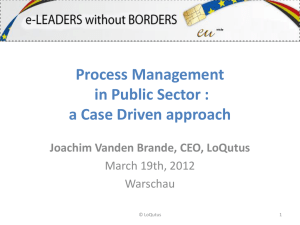
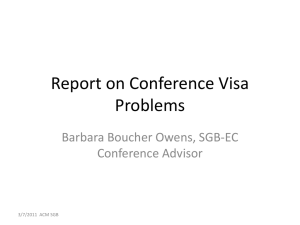


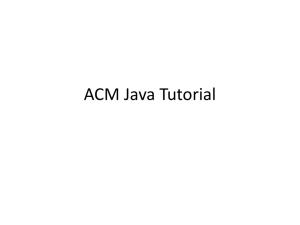

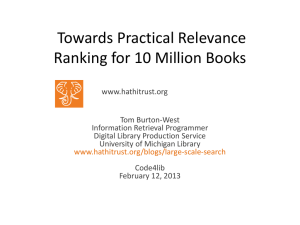
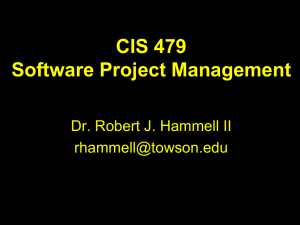
![Time Management [PPT] - University of North Alabama](http://s2.studylib.net/store/data/005233094_1-fdb38f711682ec0557e96ef203e508a9-300x300.png)

